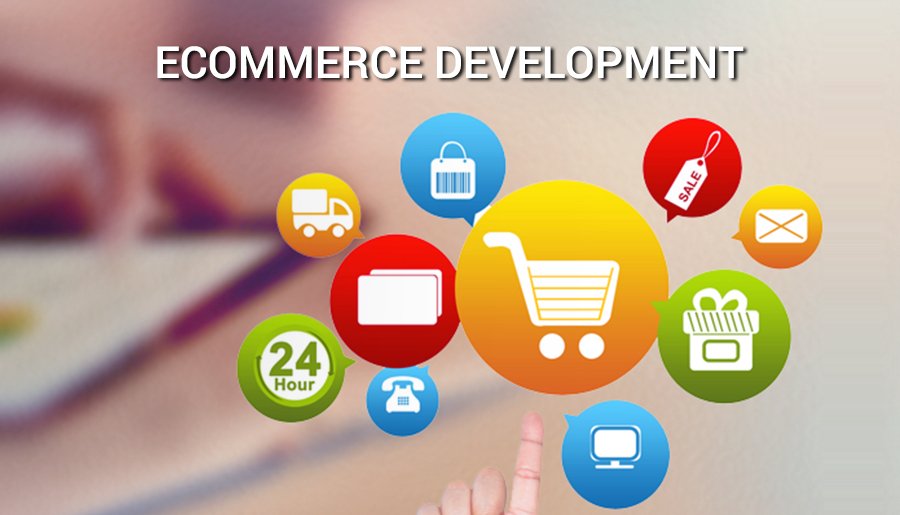Ecommerce is one of the most exciting and competitive areas of running an online business. From providing quality product descriptions and competitive pricing to using analytics to improve and expand your business continuously, there are various elements that can help your website convert visitors into customers.
Detail and high-resolution images create a comprehensive shopping experience, eliminating uncertainty and giving consumers confidence when making purchasing decisions. These two elements are integral in turning site visitors into customers.
1. Design
Ecommerce website development company in coimbatore are becoming an integral component of running any successful business, and having one designed properly is absolutely essential to driving traffic, increasing search engine visibility and optimizing conversion rates. But not all ecommerce websites are created equal: only those designed with specific needs in mind tend to succeed long term; poorly designed ones may result in missed sales opportunities, dissatisfied customers and overall brand harm.
First impressions of websites can form in as little as 50 milliseconds, making it critical that an ecommerce website communicates its message clearly and quickly at all times. A homepage must communicate what products or services the store sells as well as pricing ranges, customer demographics and audience segmentation quickly – plus be accessible across devices.
Ecommerce websites should feature an easy-to-use shopping cart that allows visitors to efficiently view their product selection and make purchases, multiple payment options that protect consumer information, a newsletter signup form for interested buyers to collect their email addresses so you can nurture them through conversion by sending promotional emails, as well as an opt-in form to signup new subscribers and collect email addresses of interested buyers.
ecommerce industry is ever-evolving and keeping up with these changes is essential if you wish to remain competitive and expand your business. By staying current on trends in ecommerce design, you can better serve customers while building an established presence online.
An ideal ecommerce platform should offer its customers a personalized, unique, and premium buying experience – this is especially critical as consumers often do not interact directly with company representatives. An exceptional user experience design strategy can help your company stand out from competitors and attract more valuable customers; one proven method for doing this is through user journey mapping which incorporates various aspects of marketing and web development to optimize customer interactions.
2. Content
Content creation that addresses current trends and informs potential customers of your product/service can make all the difference for purchase success. It’s thus critical that businesses create content which speaks directly to buyers on their purchase journeys.
Quality ecommerce content establishes brands as experts and builds trust among their audiences, answering any queries that arise during the buying process and answering questions that might come up during this stage of sales. When combined, quality content can transform websites from just storefronts into fully functioning ecommerce platforms.
No matter if it is a product description that provides all the essential details needed by buyers or a blog post highlighting an amazing offer or discount, content plays a vital role in creating the customer experience on an ecommerce website. Aiming for maximum detail without becoming overly lengthy and boring for your audience should always be prioritized when creating any piece of writing or speaking content for an ecommerce store.
One of the cornerstones of an effective ecommerce website is ensuring its shipping and return policies are clearly communicated to potential buyers. By having this information readily available, shopping experience becomes seamless while building customer confidence which ultimately can increase conversion rates.
Ratings and reviews are another key component of an effective ecommerce website, with 95% of online users consulting these reviews before making their purchasing decisions. As these must be easily accessible on your site, make sure they’re accessible to visitors without losing them in translation!
Photos can also help indecisive shoppers feel more assured in their purchase decisions, whether that means jewelry on a person, formal dresses worn to special events, or couches set against living rooms – images provide crucial clues that help these shoppers visualize how the product may look and work for themselves.
Retailers can utilize Q&A sections of websites as another method to address customer questions and engage their audience through interactive content such as Sephora’s “Concealer Quiz” and personalized “Skincare Quiz”, while answering customers’ most frequently asked questions. For instance, Sephora offers these content pieces to engage their target market while answering frequently asked queries in a fun yet informative manner.
3. Conversion
Turning visitors into customers is the key to online store success. Your website should offer an effortless purchase experience, catering to today’s demanding consumers with user-friendly pages that feature both branded product pages and editorial content that caters directly to them – everything should exude an atmosphere of modern browsing friendliness!
Ecommerce conversion can be broadly defined as any action which measuresably increases sales. For most businesses, this could include orders or activities where individuals provide contact information so that continued marketing efforts may reach them (like signing up for a newsletter). Most organizations aim to improve their ecommerce conversion rates.
To maximize conversion on your ecommerce store, ensure product pages offer all of the information visitors require to make an informed decision – including price, size, color, material and availability details. It may also help to use search engine optimization and keyword research techniques to attract traffic; provide secure payment methods which will guarantee consumer protection – and don’t forget search engine optimization as an additional method.
Alongside improving your ecommerce conversion rates, it’s also critical to test and improve your website continuously. Doing this will enable you to stay ahead of competitors by optimizing for what works best with customers; perhaps experimenting with different page designs or trying out various landing pages might do just the trick; testing different traffic sources like social media or paid ads may also provide some valuable insight.
Many ecommerce websites struggle with striking the appropriate balance between brand identity and conversions. A purely brand-focused approach could result in less functional websites or confusing experiences for your consumers; conversely, conversion-focused approaches might compromise brand integrity to increase sales; yet there is a way to integrate both in a way that allows them both to coexist harmoniously together while mutually reinforcing each other.
4. Marketing
Commerce has become ubiquitous in our modern connected world. From buying a T-shirt on Instagram to shopping home goods online retailers or band merchandisers on Facebook pages – commerce is everywhere and consumers and business owners alike need to understand how best to utilize ecommerce platforms for their needs. A good ecommerce website must include essential features that drive traffic, convert visitors, and maximize sales – here is our essential checklist of what make up an ideal ecommerce website:
One of the key elements of an ecommerce website is an easy-to-use shopping cart, designed with customer experience in mind. A well-crafted cart should encourage conversions while making customers feel at ease when purchasing from your website. An effective ecommerce cart should include all necessary information to make purchasing easier; including product name/description/price and quantity details as well as an easily navigable ‘add to cart/check out’ button.
Payment processing is another essential element of an ecommerce site, as customers need a safe and straightforward payment experience to keep coming back. One easy way to ensure this is with an SSL certificate and common online payment gateways – something which will have a profound effect on customer security and your ecommerce data security.
Finally, an ecommerce website must be mobile-friendly in order to appeal to today’s smartphone-wielding crowd. This can be accomplished through responsive web design, which adapts itself to fit all devices. Having such a site allows customers to access it anywhere at any time while making purchases easily on the move.Ecommerce development company customer service excellence is an absolute necessity in the world of ecommerce, given that direct interaction isn’t possible. By offering exceptional experiences across all channels, you will build customer loyalty and repeat purchases. This can be accomplished through various techniques like chatbots that answer inquiries quickly or gathering social proof through testimonials like “love this!,” helping your site attract the right target market while driving more conversions.



